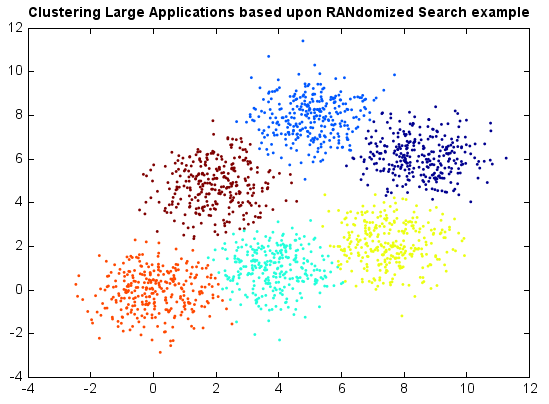Clustering Large Applications based upon RANdomized Search¶
The K-Medoids algorithm is an adaptation of the k-means algorithm. Rather than calculate the mean of the items in each cluster, a representative item, or medoid, is chosen for each cluster at each iteration. The K-Medoids algorithm attempts to minimize the distance between points labeled to be in a cluster and the medoid of that cluster. So a medoid is a most centrally located point in the cluster. K-Medoids works with an arbitrary matrix of distances between data points instead of L2. It is also more robust to noise and outliers as compared to K-Means.
The most common realisation of K-Medoids clustering is the Partitioning Around Medoids (PAM) algorithm. PAM uses a greedy search which may not find the optimum solution, but it is faster than exhaustive search.
CLARANS (Clustering Large Applications based upon RANdomized Search) is a more efficient medoid-based clustering algorithm. In CLARANS, the process of finding k medoids from n objects is viewed abstractly as searching through a certain graph. In the graph, a node is represented by a set of k objects as selected medoids. Two nodes are neighbors if their sets differ by only one object. In each iteration, CLARANS considers a set of randomly chosen neighbor nodes as candidate of new medoids. We will move to the neighbor node if the neighbor is a better choice for medoids. Otherwise, a local optima is discovered. The entire process is repeated multiple time to find better.
from miml.cluster import CLARANS
fn = os.path.join(datasets.get_data_home(), 'clustering', 'gaussian',
'six.txt')
df = DataFrame.read_table(fn, header=None, names=['x1','x2'],
format='%2f')
x = df.values
model = CLARANS(k=6, max_neighbor=10, nlocal=20)
y = model.fit_predict(x)
scatter(x[:,0], x[:,1], c=y, edgecolor=None, s=3)
title('Clustering Large Applications based upon RANdomized Search example')


